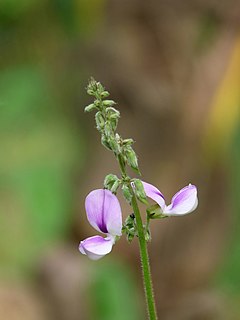| Cassipourea | |
|---|---|
 | |
| Cassipourea sp. | |
| Scientific classification | |
| Kingdom: | Plantae |
| Clade: | Angiosperms |
| Clade: | Eudicots |
| Clade: | Rosids |
| Order: | Malpighiales |
| Family: | Rhizophoraceae |
| Genus: | Cassipourea J.Agardh |
Cassipourea is a genus of flowering plants in the family Rhizophoraceae. There are about 40 species. [1] The genus is divided into several subgenera, based mainly on the structure of the flowers. [2]

The flowering plants, also known as angiosperms, Angiospermae or Magnoliophyta, are the most diverse group of land plants, with 416 families, approximately 13,164 known genera and c. 369,000 known species. Like gymnosperms, angiosperms are seed-producing plants. However, they are distinguished from gymnosperms by characteristics including flowers, endosperm within the seeds, and the production of fruits that contain the seeds. Etymologically, angiosperm means a plant that produces seeds within an enclosure; in other words, a fruiting plant. The term comes from the Greek words angeion and sperma ("seed").

The Rhizophoraceae are a family of tropical or subtropical flowering plants. Among the better-known members are mangrove trees of the genus Rhizophora. Around 147 species are distributed in 15 genera, most native to the Old World. Some species produce wood, used for underwater construction or piling, and tannins for leather making.
Species include:
- Cassipourea acuminata Liben
- Cassipourea brittoniana Fawc. & Rendle
- Cassipourea eketensis Baker f.
- Cassipourea fanshawei Torre & Goncalves
- Cassipourea flanaganii (Schinz) Alston
- Cassipourea hiotou Aubrev. & Pellegrin
- Cassipourea obovata Alston
- Cassipourea subcordata Britton
- Cassipourea subsessilis Britton
- Cassipourea swaziensis Compton
- Cassipourea thomassetii Alston
Cassipourea acuminata is a species of plant in the Rhizophoraceae family. It is found in Cameroon, the Democratic Republic of the Congo, and Gabon. Its natural habitats are subtropical or tropical moist lowland forests and subtropical or tropical swamps. It is threatened by habitat loss.
Cassipourea brittoniana is a species of plant in the Rhizophoraceae family. It is endemic to Jamaica.
Cassipourea eketensis is a species of plant in the Rhizophoraceae family. It is endemic to Nigeria. It is threatened by habitat loss.





